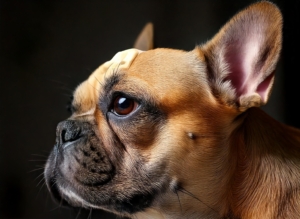Here’s an overview:
Historical Background and Evolution
General Characteristics of the French Bulldog Head
Unique Features of the French Bulldog Skull
Genetic Control of the Skull Shape Features of French Bulldogs
Genetic Control of the Skull Shape Features of French Bulldogs
Dog Breeds Considered in the Study and Their Comparison with French Bulldog Breeds
Impact of Skull Structure on Health
Breathing Issues Related to Skull Shape
Breeding Practices Skull Morphology
Veterinary Care and Management
Conclusion: Caring for Your French Bulldog
Historical Background and Evolution
The French Bulldog has an interesting history. This breed soon became fashionable in the eyes of Parisians. Crossbreeding between Toy bulldogs and local French ratters produced the breed known as the French bulldog.
- As a result of development in urban areas, they were smaller in size.
- Targeted breeding promoted specific features like the bat ear.
- Purposeful cross-mating led to the emergence of a shortened head shape, also termed as brachycephaly.
- Companionable traits became more of a target.
- Historically, classical representations mark an advancement in sculpturing.
This anatomical structure of French bulldogs head is a result of comprehensive studies on selective breeding of many dogs in effort to achieve certain external characteristics.
General Characteristics of the French Bulldog Head
The French Bulldog is characterized by a particular skull shape, which predisposes him to maintaining a consistent aspect. The essential aspects include:
- Head Shape: The head is brachycephalic with a wide and square frontal bone. A prominent stop exists between the forehead and the muzzle.
- Muzzle: It is broad and short, and has a brachycephalic build.
- Nose: Nostrils are rather small which might obstruct proper breathing.
- Eyes: They are large and spaced apart, allowing for enhanced expression.
- Jaw: The jaw is strongly developed and has an undershot position, which fits the general phenotype of the breed.
Unique Features of the French Bulldog Skull
- Brachycephalic Structure: The French Bulldog skull has a brachycephalic feature having its nose short and snout wide.
- Large Eye Sockets: They can be recognized with a large eye sockets and set wider than normal.
- Pronounced Jaw Muscles: The masticatory muscles are well developed to support a fierce bite.
- Nasal Passages: Due to its size, the nasal passages are small, which can result in issues with breathing.
- Skull Sutures: The shape and structure is supported by prominent skull suture.
- Flat Forehead: The breed has an almost flat forehead which alters its pattern.
- Nasal Fold: It is an observation that the presence of dominating nasal folds enhances their facial structure.
Genetic Control of the Skull Shape Features of French Bulldogs
The distinct lines of French bulldogs’ skulls unquestionably resulted from selective breeding practices. The following dominant genetic factors are involved:
- Brachycephalic Gene: This gene in particular allows the breed to have a short increased width of the vault.
- Inherited Traits: With each generation many features are inherited which shapes the cranium.
As a result, all the factors mentioned account for the genetic heritage of the breed in its unique form of skulls.
Dog Breeds Considered in the Study and Their Comparison with French Bulldog Breeds
Variation in French Bulldog Skull with other dog skulls as a comparative study remains to be harnessed more in the future.
- Skull Shape:
- French bulldogs have been described as having a brachycephalic skull which is short and broad in shape.
- The skull of a greyhound is said to be of a dolichocephalic type which is long and narrow..
- Breathing Mechanics:
- Owing to the shape of the skull the French bulldogs are often said to suffer from brachycephalic airway syndrome.
- In contrast, the long skull shape of beagle dogs contrasts facilitates normal respiration without any of the above mentioned complaints.
- Eye Position:
- As common among brachycephalic breeds, the French Bulldogs have a broad eye placement.
- More protruded eyes can be seen in German Shepherds rather than the French bulldogs.
This anatomical aspect coupled with the other aspects understanding differences in the physical structure of a breed for a veterinarian becomes handy in dealing with animal health issues associated with that breed.
Impact of Skull Structure on Health
As previously mentioned, Brachycephalic skull structure is predominant in French bulldogs, which further affects their health.
- Breathing issues: Such as the inability to expand chest due to the small size of insoluble soft tissues like nasal folds and operatory muscle.
- Sleep disruption: Into different phases of insomnia without awareness or movement.
Eyes are the other body part that suffers:
- Exophthalmos: greater likelihood of vision-related conditions, trauma and malignancy induction.
Monitoring is crucial in these consideration to make life comfortable as well.
Breathing Issues Related to Skull Shape
All French Bulldogs have what is known as a brachycephalic skull is known to cause various breathing problems. Some of the ways it does so is as follows:
- Stenosis of nostrils: Obstruction of respiration through the nose through the nose causes the nostrils to narrow.
- Extended soft palates: The extended palate makes the airway smaller further making breathing through the mouth difficult.
- Hypoplastic Trachea: A condition that results in an unusually small trachea and further narrows airflow.
Owners should monitor for:
- Over do it by shaking a lot
- Loud wheezing
- bluish discoloration of the gums and tongue
Breeding Practices Skull Morphology
French bulldogs have greatly inspired in their skull morphology by selective breeding practices. For example, breeders want more short muzzles together with a wide skull which means that the dog has a brachycephalic skull.
Key breeding practices include:
- Genetics: breeders mate dogs that exhibit the desired skull type.
- Inbreeding: this is done to keep the breed specific traits uniform
These practices cause several notable anatomical features including but not limited to:
- Reduced Nasal cavities: Results to a struggle while breathe.
- Broad Cranium: A feature typical of this type of dog. There are many others.
- Returned Forehead: Or pronounced outline to the angle formed between the forehead’s tip and the nasal ridge at the end of the bone.
Veterinary Care and Management
With their grossly unusual head structure, French bulldogs need specific veterinary attention, else, a lot issues can arise. This is why regular follow ups are also important.
Common Health Issues of French Bulldog’s Skull:
- Brachycephalic Airway Syndrome: they really find it difficult to inhale oxygen through their short noses.
- Dental Offsets: poor alignment between opposing teeth causing the diseases relating to the dentals.
Recommended Care Practices of French Bulldog’s Skull:
- Have you visit a veterinarian on a regular basis so they can detect any possible problems early on.
- Closely observe their breath patterns and report any case of difficulty in respiration.
- Practice good oral hygiene for the prevention of dental diseases.
- Strive for proper diet management for a healthy body.
Same Day Interventions of French Bulldog’s Skull
The dentists will take the necessary surgical measures if there is an effective airway obstruction. There is a need to provide combined treatment together with dental specialists to maintain dental health.
Diet and Nutrition Guidelines
Owing to their particular skeletal structure, French bulldogs have specific dietary requirements. For example:
- Kibble Size and Shape: Smaller or specially-shaped kibble to accommodate their brachycephalic facial structure.
- Wet Food: It is easier to chew and digest, thereby less stress on their jaw.
- Hydration: Always have a clean supply of drinking water due to respiratory risks.
- Treats: Provide low-calorie snacks to avoid obesity, which is prevalent in this species.
- Feeding Schedule: A few small portions many times a day to prevent bloating and keep getting energy.
Summary of Key Points
- Distinctive Skull Shape: French Bulldog possesses a brachycephalic skull which has a short and broad head.
- Airway and Breathing Challenges: Due to the small compact size of the skull, the airways are small causing breathing problems including BOAS.
- Champion Features: Common features of these dogs include an undershot mouth, a flattened nose, and bulging eyes, these features also increase chances of eye diseases.
- Cranial Structure: The jaws have powerful muscles for biting and are located in the skull, however, these structures further restrict their breathing.
- Genetic Considerations: The shape of the skull is a consequence of breeding practices that facilitate the appearance of the dog, but which can also lead to poor health.
Future Research Directions
There is still an urgent need to expand ongoing research concerning the intricacies of the French Bulldog skull. These include:
- Gene Mapping: Studying the genetic expression targeting the craniofacial region.
- Breed Specific Diseases: Assessment of links between a person’s skull shape and respiratory diseases.
- Evolutionary Roadmaps: The development of the shape of the skull of other breeds through the ages.
- Technological advances: Applying three-dimensional imaging for more detail.
- Behavioral Impact: Understanding how the structure of the skull affects the behavior of the animal.
- Surgical Techniques: Improving the practice of veterinarians in the treatment of skull defects.
- Preventive Care Strategies: Recommendations for preventing inherited diseases.
Conclusion: Caring for Your French Bulldog
French Bulldogs, like any other breed, require regular visits to the veterinary doctor. The peculiar jaw of French Bulldogs necessitates that their teeth be properly taken care of. Obesity is a problem within the breed and thus a balanced diet should always be kept in mind to avoid having breathing problems. Always pay attention to their breathing rates, especially after they have engaged in a lot of physical activity or when the weather is hot. Ears should remain dry and clean to avoid possible infections.





